[ad_1]
Long before the invention of airport lounges and long-haul flights, travelling was an adventurous undertaking only attempted by explorers and the brave (or crazy?) few. Spending months at sea traversing vast oceans in dangerous conditions was par for the course. Now we have the means to wake up in Sydney and fall asleep in New York within a matter of hours, and to do so in comfort.
While some may say that this ease and accessibility of travel is a trade off for the loss of history and culture, we would argue the exact opposite. Travel allows us to explore, understand, respect and protect the remnants of human history with each new generation. An important aspect of travelling is seeing things that remind us of the way things used to be. It helps bring the pages of the history books to life in a way no classroom ever could.
So if you’ve always wanted to travel through time, this is your final boarding call. You don’t need a time machine or even a Delorean, just take a step back in time with these historical holiday destinations to enjoy a glimpse of days gone by.
ULURU
Rising dramatically from the desert sand of Central Australia, Uluru is an iconic sandstone rock formation and one of Australia’s most famous attractions. Dating back about half a billion years, Uluru is more than just a photo opportunity. The huge red rock measures 348m high and 9.4km around the base and is considered one of the greatest natural wonders of the world. Uluru is a deeply spiritual place. Although this is particularly true for the Anangu people and traditional owners of the land, visitors from far and wide can feel a powerful presence the moment they set eyes on it.
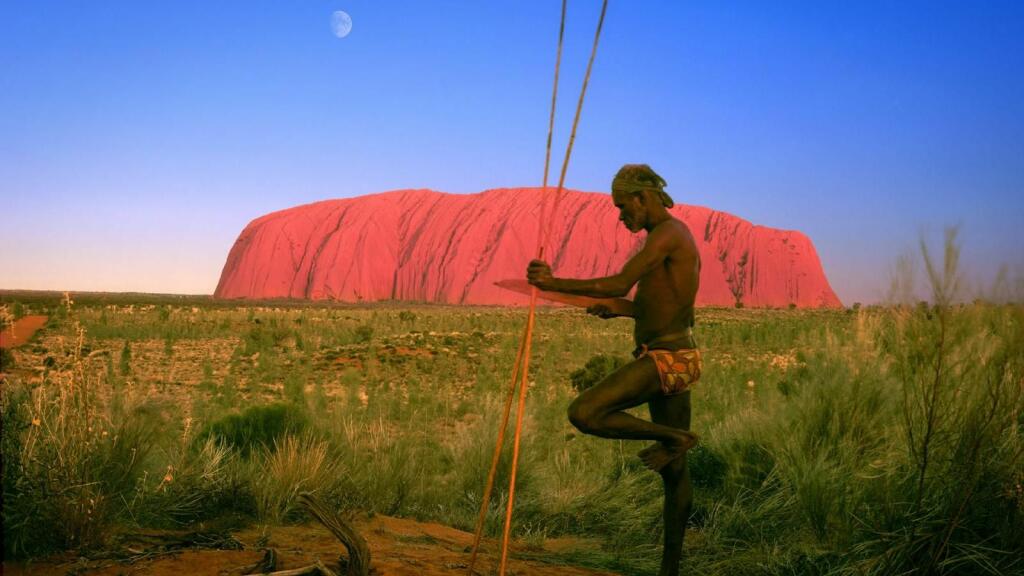
Although its spectacular panorama is obvious, the real beauty of Uluru is found when you look closer. The ancient monolith nurtures rare plants and animals as well as caves painted with remarkable rock art and important spiritual sites. Bearing ancient wisdom expressed through traditional markings, the stories of the creation ancestors are passed on from generation to generation, just as they have been for thousands of years. Although at its most stunning at sunrise and sunset, nothing can prepare you for the deeply moving experience of visiting the rock at any time of day.
Many tourists looking to tick this icon off their bucket list have been staggered by the surprising spiritual connection they have discovered with the landmark and rugged outback landscape that surrounds it. Situated within the World Heritage-listed Uluru-Kata Tjuta National Park, Uluru holds a special cultural significance and is described as the place where earth and memories exist as one. Here Australians will feel connected to their land like never before. A visit to Uluru is a life changing experience that offers modern day Australians a glimpse into life on our land as it was lived thousands of years ago by its traditional owners. Sparking a new appreciation for the spiritual significance the land has in their culture, visitors will leave Uluru with a heightened respect for the traditional caretakers of our land.
MELBOURNE
Melbourne is a thriving modern city known for its bohemian atmosphere, famous foodie scene, chic shopping and vibrant nightlife. However side by side with the towering sky scrapers and corporate towers sit grand old buildings, striking heritage architecture and historic attractions and landmarks. The city’s well-preserved historical buildings span every era from the mid-1800s and it’s these antique gems that give Victoria’s capital its unique edge. From heritage listed monuments to majestic cathedrals, Italianate architecture to lavish French Renaissance-inspired structures, colonial gardens to Melbourne’s maritime past, much of Australia’s history and identity can be discovered among the city streets.
No single building is as iconic to Melbourne as Flinders Street railway station. Although still a modern-day commuter hub, the original terminus has stood on the site since 1854. Standing on the opposing corners of Swanston and Flinders Streets provides the best opportunity to capture the ornate Art Nouveau façade adorned with copper clad domes, pressed metal work, stained glass, wrought iron railings and a plethora of distinctive decorative elements.
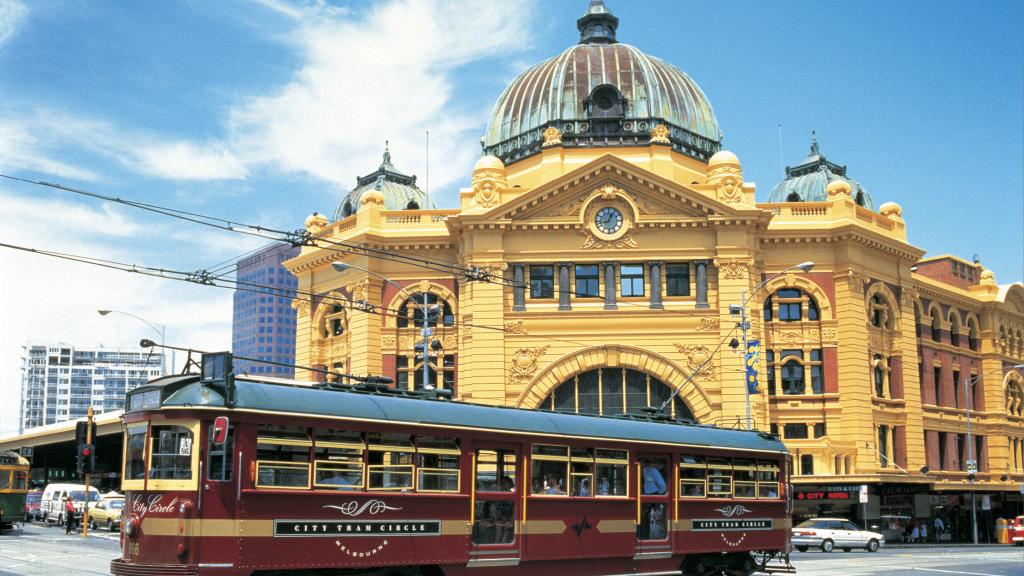
Another structure synonymous with Melbourne is the UNESCO World Heritage-listed Royal Exhibition Building. Erected in 1880 and taking inspiration from Italy’s Florence Duomo, the striking interiors played host to the golden age of the World Fair and is now considered one of the last remaining ‘palaces of industry’.
Escape the city and head for the foreshore of Port Phillip Bay to discover the colourful cultural icons and historical assets of the Brighton Bathing Boxes. Much has been written about Victorian morality and the way it impacted how people lived their lives, and the modesty-preserving bathing boxes serve as a reminder of Melbourne’s favourite seaside playground in the late 19th century, remaining today as they did over one hundred years ago.
A dominating symbol of authority in the Melbourne skyline since the mid-1800s, the Old Melbourne Gaol was once Australia’s most infamous prison and housed petty criminals alongside the homeless and mentally ill. Over its 70 year working life, the prison incarcerated some of the country’s most famous criminals including notorious gangster Squizzy Taylor. Iconic bushranger Ned Kelly was also executed here along with 132 other offenders. The bluestone former jail is now a museum that shares tales of prison life along with the opportunity to explore its echoy halls.
For a sobering insight into what life was like for our early settlers, drive a couple of hours west to Ballarat where the living museum of Sovereign Hill depicts the story of Australia’s goldrush boom. Once a sleepy pastoral settlement, the discovery of gold in 1851 trigged the world’s greatest alluvial gold rush, turning Ballarat into a regional city built on wealth in record time. Set on 15 hectares of a former gold mine, Sovereign Hill brings Australia’s gold rush history to life through a living township with underground mines, diggings, coach rides, costumed characters, 1850s dwellings, shops, schools and trades.
FIJI
Although Fiji is now known as a relaxing beach resort destination, it has been inhabited for around 3500 years and has a long history of indigenous traditions and values as well as tribal warfare and even cannibalism. Any visit to Fiji should be more than just a ‘fly and flop’ holiday, as just a short drive from the main tourist resort precincts is an ancient culture and landscape waiting to be discovered.
First settled by the Melanesian people, Fiji’s early settlers brought with them a diverse range of food and agricultural practices and established hierarchical communities based on descent and personal merit. Living in geographical and familial clans, they developed sophisticated irrigation systems to grow their settlements. There is only one traditional village left in Fiji, located on the mountain of Ba and a visit to Navala Village offers an insight into the island lifestyle that has been lived by generation after generation. Here thatched roof houses, called bures, are home to people who live off the land by planting their own root crops, fruit and vegetables and relying on seasonal supplies of wild pig, wild yams and fruits from the jungle.
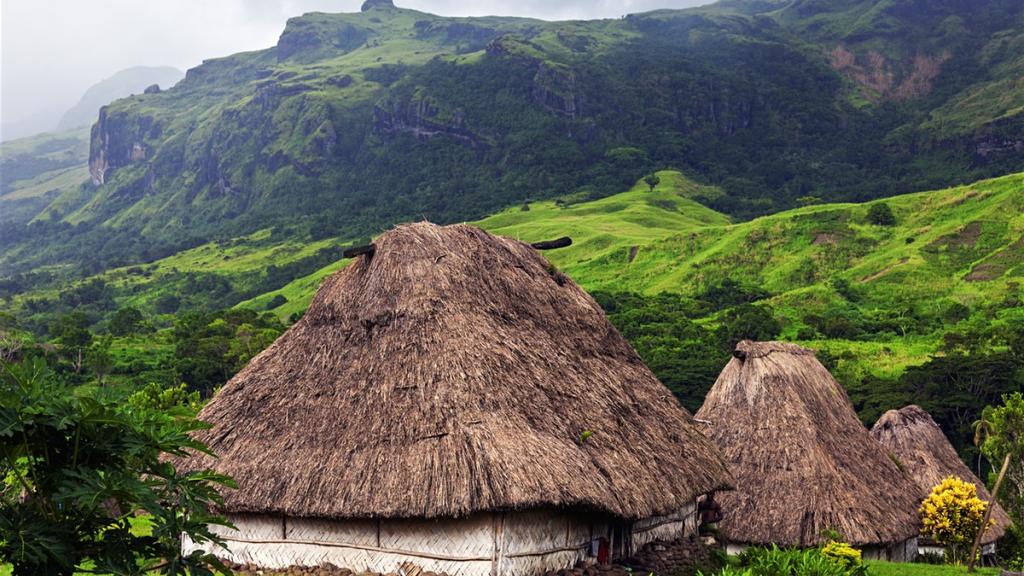
Getting to the village is a special experience in itself, as you 4WD through remote pristine native wilderness and lush jungle. Traversing over creeks, its easy to see that this landscape hasn’t been trampled by mass tourism and hasn’t changed for thousands of years. You’ll be welcomed by the chief and hear stories about how the tribes used to live, long before Europeans discovered them.
Sitting around the kava bowl, you’ll participate in a ceremony that has been carried out for hundreds of years, transporting you back to a time and place that you’ve never been before and gaining an appreciation for what the world was like back then. Generations of these people have fished here, their ancestors planted the crops that continue to sustain them, this has been their home for hundreds of years and this incredible natural way of life is what they grew up with. It truly makes you appreciate how different our modern lives are and the ways that people have lived all over the world for centuries.
However there’s joy to be found in modern history as well. Fiji is an extremely popular holiday destination with Aussies and countless Australian travellers have flocked to the island nation over the years for everything from family holidays to destination weddings, honeymoons, vow renewals, baby’s first holidays and everything in between. For many years Australian’s have been creating their own personal histories on the shores of Fiji and many love to return, whether it be year after year or on special occasions to revisit and relieve those special personal memories.
NEW ZEALAND
Aotearoa (New Zealand) was founded in the 13th century when Maori people from Polynesia settled the country, bringing with them a fascinating history and culture. The traditional Maori heritage is an ancient and enduring culture still proudly on display to this day. Amazing Māori historic sites, taonga (treasures) and beautiful colonial-era buildings create a potent fusion of time periods throughout the country.
Whakarewarewa, the legacy and home of the Tūhourangi-Ngāti Wāhiao people, is an incredible area known as New Zealand’s only living Māori village. Located within the geothermal region of Taupō, the Māori population of the village have traced their ancestry back to the original occupiers of the valley in 1325. According to legend, the life-giving energy of the geothermal landscape has helped to preserve the village, its history and culture for more than 200 years.
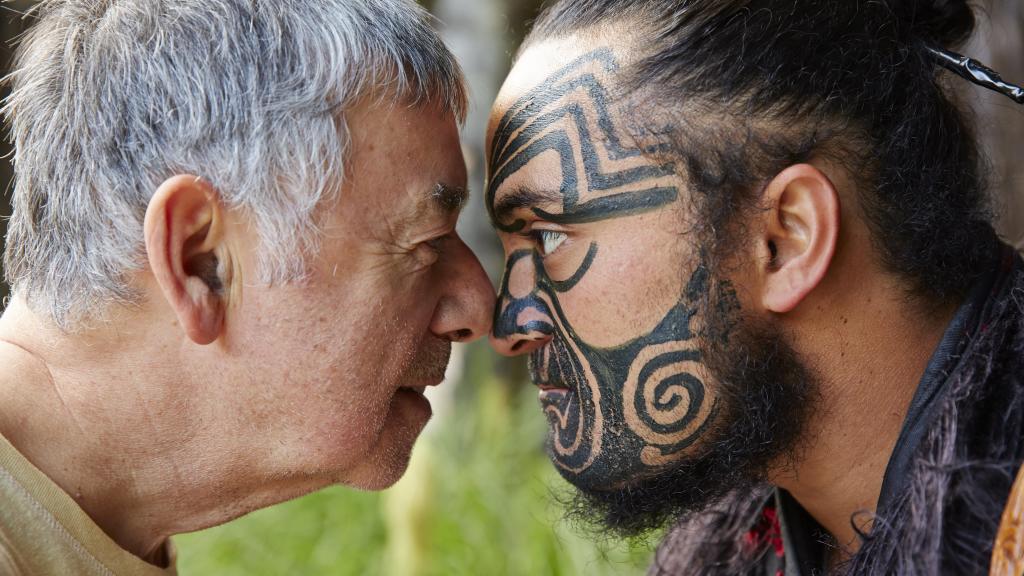
A symbol of independence and perhaps the most important historical site in New Zealand, the Waitangi Treaty Grounds is a protected area where New Zealand’s founding document, the Treaty of Waitangi, was signed between Māori chiefs and people of the British Crown. Today the site features an immersive museum experience where visitors can discover the stories of the indigenous people, learn about their way of life and how the treaty came to be.
Although New Zealand has a long history of enduring earthquakes, the region of Hawkes Bay has perhaps one of the most unique recovery stories in the country’s architectural history. The dramatic story of the towns of Havelock North, Hastings and Napier unfolded on the morning of February 3rd 1931 when a 7.8 magnitude earthquake hit Hawkes Bay killing over 250 people, permanently receding the coastline and destroying buildings. The Art Deco style popular in the 1920s was just becoming popular in New Zealand at the time, and many of the region’s buildings were rebuilt in the style. The artistic architectural design has since been preserved and is now a major highlight of visiting, with many historical tours and festivals held throughout the year. A visit to Hawkes Bay is like stepping back in time to the Roaring Twenties where gangsters ruled the streets, Prohibition ruled the nightlife and flappers ruled their hearts.
Any Aussies wanting to take a step back in time in New Zealand can’t miss a visit to the Edwin Fox, the second oldest surviving merchant ship. Located in Picton, the ship was built in 1853 and is the only surviving ship that transported convicts to Australia under charter by the British Government. For many Australians, exploring the depths and decks of the ship is the closest they will get to walking in the footsteps of their ancestors. For many, they owe their very existence and way of life in the ‘lucky country’ to the harsh conditions endured by their forebears on this magnificent voyager.
EUROPE
Europe’s history is rich and distinct, with a patchwork of traditions and cultures spanning thousands of years. Civilisations rose and fell, kings and queens were crowned and architectural wonders that have stood the test of time were built by hand, brick by painful brick. There is almost too much to mention when it comes to historical sites in Europe, however some of the most significant locations, landmarks and structures are those that have had a lasting impact on the modern world in which we now live.
Top of the list for historic European attractions is Greece, considered the cradle of Western Civilization, the birthplace of democracy and the Olympic Games. It’s ancient history and magnificent temples are still evident today with attractions like the Parthenon at the Acropolis in Athens, the Temple of Poseidon at Sounion and the Temple of Apollo at Delphi.
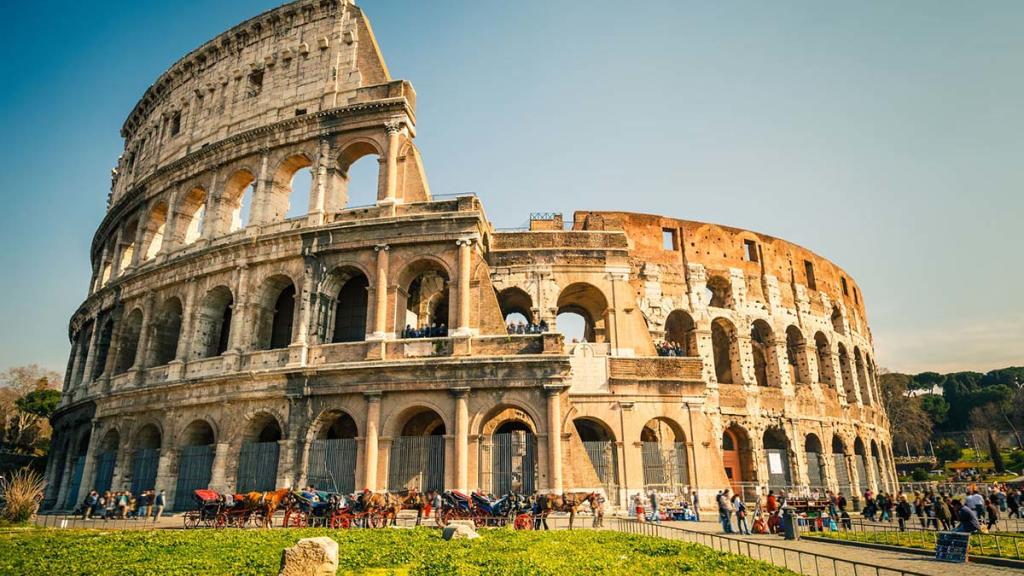
UNESCO World Heritage site Mont-Saint-Michel in Normandy, France was renowned as a centre of learning which attracted some of Europe’s greatest minds and over the course of 500 years has functioned as a Benedictine abbey, fortified medieval village, pilgrimage centre, monastery and even a prison until 1874 when it was classified as a historic monument and restored. The impressive architecture and unique natural location have resulted in an unforgettable silhouette and popular historical attraction.
If we are to learn from history about the triumph of good over evil, then the Berlin Wall is certainly a symbol of that. Representing liberation the world over, the remains of this historical monument serve as a reminder of Germany’s politically oppressive past. The fall of the Berlin Wall was one of the most significant moments in recorded history and seeing it in person is no comparison to books and movies. A surreal and moving experience, a visit to the Berlin Wall is a reminder of World War II and the dark past to which humanity must never return.
No historical tour of Europe would be complete without a visit to Italy and its Roman historical attractions. The ancient city of Pompeii has literally been frozen in time since 79AD when the volcano of Mount Vesuvius erupted and blanketed the town under thick ash, preserving the entire city in situ. Meanwhile in the heart of Rome, the iconic Colosseum offers an insight into Imperial times. With a 50,000 capacity, the ancient arena was built in 70AD and played a significant role in Rome’s heritage, celebrations, castigations and the famous gladiator battles.
Did we miss any? Share your favourite historical holidays in the comments below.
Comments
!function(f,b,e,v,n,t,s){if(f.fbq)return;n=f.fbq=function(){n.callMethod?
n.callMethod.apply(n,arguments):n.queue.push(arguments)};if(!f._fbq)f._fbq=n;
n.push=n;n.loaded=!0;n.version=’2.0′;n.queue=[];t=b.createElement(e);t.async=!0;
t.src=v;s=b.getElementsByTagName(e)[0];s.parentNode.insertBefore(t,s)}(window,
document,’script’,’//connect.facebook.net/en_US/fbevents.js’);
fbq(‘init’, ‘1505906273040234’);
fbq(‘track’, ‘PageView’);
[ad_2]
Source link
